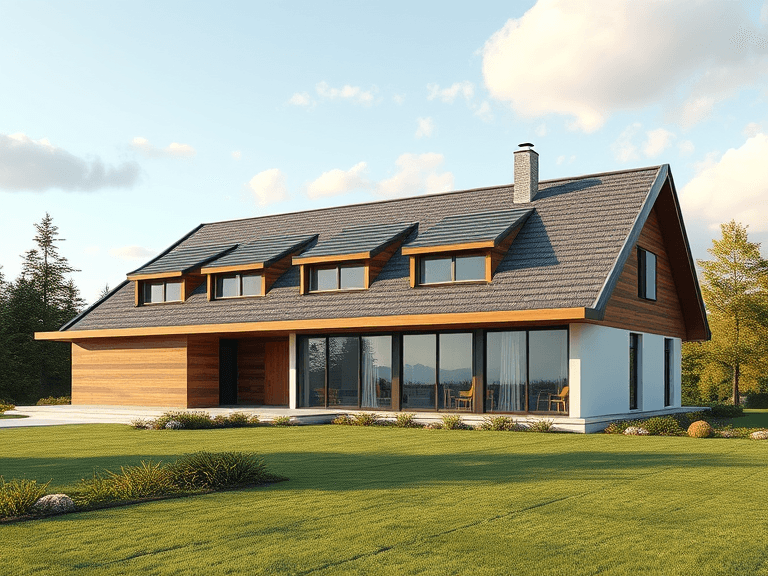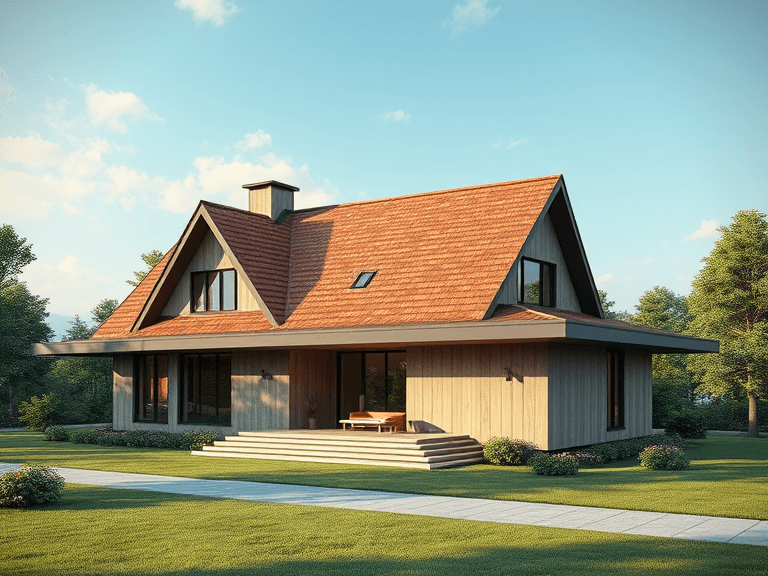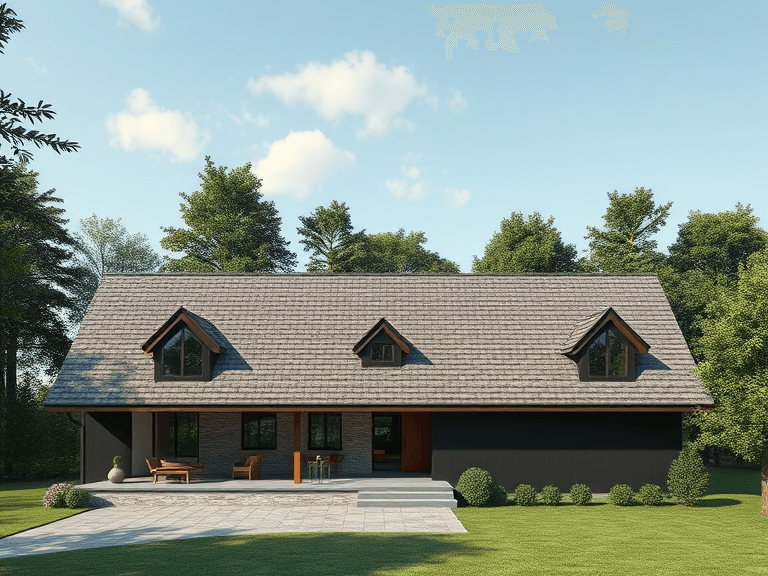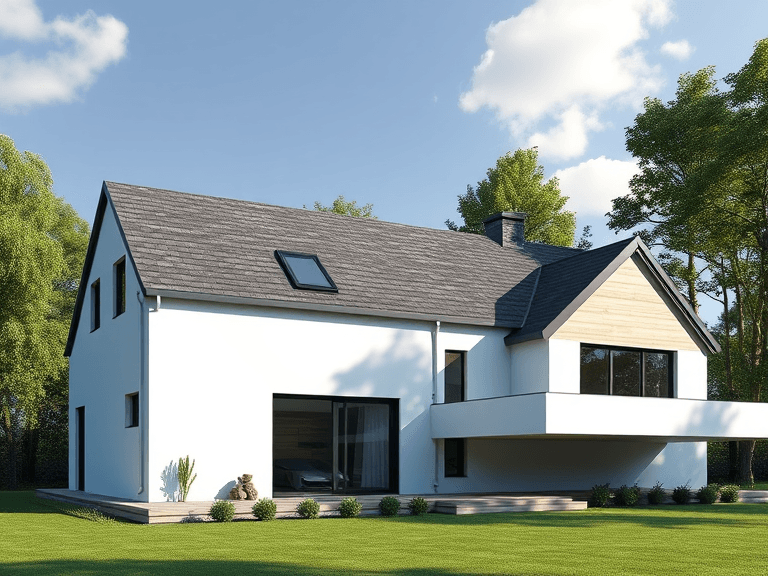
The color of roof shingles plays a significant role in the overall aesthetic appeal of a home. It is one of the first things that catches the eye, contributing to the first impression formed by visitors or potential buyers. A well-chosen roof shingle color can enhance the architectural style of your home, complementing its design elements and creating a cohesive look. Whether opting for traditional, modern, or eclectic styles, the right shingle color can highlight specific features while harmonizing with the surrounding landscape and neighborhood. Thus, homeowners must carefully consider their choices in the roof color spectrum.
In addition to aesthetics, the color of roof shingles significantly influences heat absorption and energy efficiency. Lighter colors tend to reflect sunlight, keeping homes cooler and potentially reducing air conditioning costs during warmer months. Conversely, black shingles absorb heat, which might be beneficial in cooler climates, as they can contribute to maintaining a comfortable indoor environment. Homeowners should evaluate their local climate and energy needs when deciding on the perfect roof shingle color to ensure optimal performance and energy savings.
Moreover, the shingle color can affect the resale value of a property. Prospective buyers often prefer homes with a balanced and appealing exterior. A shingle color that aligns with neighborhood trends and architectural norms can enhance marketability, while unusual or clashing colors may deter potential buyers. The importance of roof shingle color goes beyond mere personal preference; it encompasses considerations of aesthetic enjoyment, energy efficiency, and long-term investment value. Making an informed choice in selecting the perfect roof shingle color can lead to lasting benefits for homeowners.
Factors to Consider When Selecting Shingle Color
Choosing the perfect roof shingle color is a decision that extends beyond mere aesthetics; several important factors must be considered to ensure a harmonious integration with your home and surroundings. One of the primary considerations is the regional climate. In areas with intense sunlight, lighter shingle colors such as beige or light gray can help reflect heat, thus contributing to energy efficiency. Conversely, in regions with colder climates, darker shingles can absorb heat, providing warmth during the winter months.
The architectural style of your home significantly influences the choice of shingle color. Traditional styles, such as Colonial or Victorian, often look best with earthy tones or shades that blend seamlessly with natural elements. Modern designs, on the other hand, may lend themselves to bolder color choices, allowing homeowners to experiment with a wider palette. It is critical to consider how the chosen color complements, or contrasts with, other design elements of the property, such as siding, trim, and landscaping.
Personal preference also plays a vital role in the selection process. Your taste can profoundly affect how you perceive your home, and choosing a color that resonates with your style can create a satisfying sense of ownership. However, it is also wise to evaluate the existing color palette of the home to ensure a cohesive look. Additionally, be aware that local building codes or homeowners association rules might impose restrictions on certain colors, which could limit options or impose specific requirements on your selection. Verifying these regulations beforehand can save time and ensure compliance.
Overall, it is crucial to weigh each of these factors carefully when selecting the perfect roof shingle color, as they collectively influence the long-term appeal and efficiency of your home.

Popular Roof Shingle Color Trends
The selection of roof shingle color greatly impacts not only the aesthetic of a home but also its overall market value. Recent trends in roofing colors indicate a pronounced shift towards both neutral tones and more vibrant hues. Neutrals such as grays, browns, and beiges remain consistently favored due to their versatility and ability to blend harmoniously with a variety of architectural styles. These classic colors contribute to a timeless appeal, particularly in residential areas where maintaining a cohesive neighborhood aesthetic is considered essential.
Conversely, there has been a noticeable rise in the popularity of bold roof shingle colors. Homeowners seeking to make a personal statement are opting for shades of dark blue, deep green, and even rich reds. These vibrant options can serve to highlight unique architectural features and create striking contrasts against the siding and trim. Furthermore, individuals are increasingly interested in utilizing colors inspired by nature, such as earthy greens and warm terracottas, which evoke a sense of connection to the surroundings.
Emerging styles also reflect a trend towards dual-tone roofs. By combining traditional colors with splashes of brighter shades, homeowners can achieve a customized look that stands out in the neighborhood. It is essential to assess how these colors will complement or clash with local surroundings, particularly the landscaping and climatic elements of the area. Historical color trends provide valuable context for present choices. For example, while natural browns and greens were predominant in the past due to their integration with natural landscapes, the contemporary movement towards bold colors shows a shift in preferences driven by a desire for individuality.
This dynamic landscape of roof shingle color trends indicates that homeowners are now more discerning than ever, seeking to blend personal style with neighborhood harmony while also responding to cultural influences and environmental considerations.
How to Visualize Roof Shingle Colors Before Making a Decision
Selecting the perfect roof shingle color can be a daunting task, but visualizing different colors on your home can make the process significantly easier. One of the most practical approaches includes obtaining color samples from various manufacturers. These samples allow homeowners to see the actual materials and tones in person, providing a tactile experience that aids in making a well-informed decision. When viewing samples, it is essential to examine them at different times of the day, as lighting can dramatically alter a color’s appearance.
Another effective method for visualizing roof shingle colors is to utilize digital visualization software. Many roofing companies offer online tools where homeowners can upload photos of their homes and apply various shingle colors to them. This feature not only showcases how different roof colors interact with the existing style and palette of the home but also helps in assessing whether a particular shade complements the surrounding environment.
For a more immersive experience, augmented reality (AR) apps have revolutionized how homeowners can visualize potential shingle colors. These apps allow users to see a virtual representation of different shingles on their roofs via their mobile devices. By simply pointing their camera at their house, users can cycle through various colors and styles, granting them immediate feedback on their choices. This interactive approach makes it easier to narrow down options before making a final decision.
Lastly, when assessing roof shingle colors, homeowners should remember that colors may appear differently in various lighting conditions. It is advisable to view the shingles in both natural light and under artificial lighting to truly understand their hues. By employing these practical visualization methods, homeowners can confidently choose the perfect roof shingle color that suits their taste and enhances the overall aesthetic of their home.


